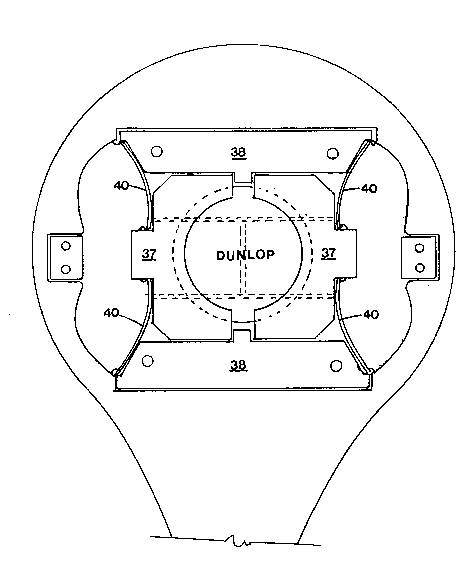Some of the information on this Web page has been provided by external sources. The Government of Canada is not responsible for the accuracy, reliability or currency of the information supplied by external sources. Users wishing to rely upon this information should consult directly with the source of the information. Content provided by external sources is not subject to official languages, privacy and accessibility requirements.
Any discrepancies in the text and image of the Claims and Abstract are due to differing posting times. Text of the Claims and Abstract are posted:
| (12) Patent Application: | (11) CA 2083987 |
|---|---|
| (54) English Title: | BAT FOR CATCHING GAMES |
| (54) French Title: | BATON DE JEU |
| Status: | Deemed Abandoned and Beyond the Period of Reinstatement - Pending Response to Notice of Disregarded Communication |
| (51) International Patent Classification (IPC): |
|
|---|---|
| (72) Inventors : |
|
| (73) Owners : |
|
| (71) Applicants : | |
| (74) Agent: | BARRIGAR & MOSS |
| (74) Associate agent: | |
| (45) Issued: | |
| (22) Filed Date: | 1992-11-27 |
| (41) Open to Public Inspection: | 1993-06-21 |
| Availability of licence: | N/A |
| Dedicated to the Public: | N/A |
| (25) Language of filing: | English |
| Patent Cooperation Treaty (PCT): | No |
|---|
| (30) Application Priority Data: | ||||||
|---|---|---|---|---|---|---|
|
APPLICANT: MARIE LOUIS CLAUDE TALBOT
TITLE: BAT FOR CATCHING GAMES
ABSTRACT
A bat or racquet for a new ball catching game has a handle and a
head, the head having an orifice through which the ball can pass
and having a net-like material against which the caught ball
strikes. The net like material is attached to a pair of opposed
elements which are slidable in a frame inside the bat. The
opposed elements are spring loaded with the springs being arranged
to be off-centre for the elements to snap between a first ball-
receiving condition, and a second ball capturing condition.
Note: Claims are shown in the official language in which they were submitted.
Note: Descriptions are shown in the official language in which they were submitted.

2024-08-01:As part of the Next Generation Patents (NGP) transition, the Canadian Patents Database (CPD) now contains a more detailed Event History, which replicates the Event Log of our new back-office solution.
Please note that "Inactive:" events refers to events no longer in use in our new back-office solution.
For a clearer understanding of the status of the application/patent presented on this page, the site Disclaimer , as well as the definitions for Patent , Event History , Maintenance Fee and Payment History should be consulted.
| Description | Date |
|---|---|
| Inactive: IPC deactivated | 2017-09-16 |
| Inactive: IPC assigned | 2016-07-14 |
| Inactive: First IPC assigned | 2016-07-14 |
| Inactive: IPC expired | 2015-01-01 |
| Application Not Reinstated by Deadline | 1998-11-27 |
| Time Limit for Reversal Expired | 1998-11-27 |
| Deemed Abandoned - Failure to Respond to Maintenance Fee Notice | 1997-11-27 |
| Application Published (Open to Public Inspection) | 1993-06-21 |
| Abandonment Date | Reason | Reinstatement Date |
|---|---|---|
| 1997-11-27 |
Note: Records showing the ownership history in alphabetical order.
| Current Owners on Record |
|---|
| MARIE LOUIS CLAUDE TALBOT |
| Past Owners on Record |
|---|
| None |